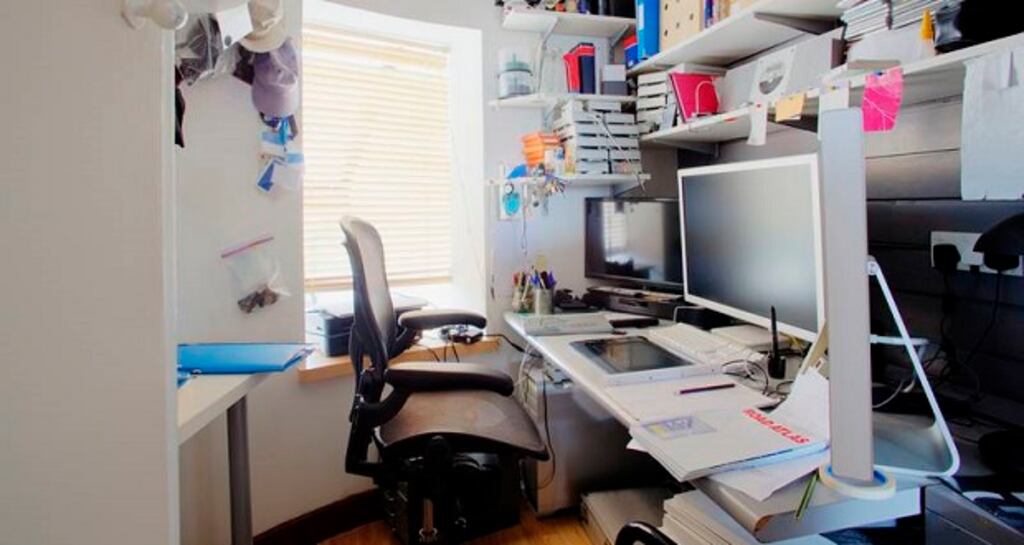Time was when the notion of video interviewing was seen either as cutting edge or second rate – the only option if you couldn’t, typically for reasons of geography, bring a candidate in. The pandemic has changed all that.
“Video is everything now, at every level,” says Mark O’Donnell, managing partner of Odgers Berndtson Ireland.
The agency specialises in executive search. “It tends to take place in four stages, starting with the initial interview with us, which is all now done on video, as is the first-round interview with the client,” he says.
“The second-round interview with the client usually includes a presentation, as well as the results of psychometric testing that we will have undertaken, which will be explored there and then. Generally, if possible, clients like to do that in person but if not, they will do it on video.”
It’s not all done remotely by Zoom. At various stages during the pandemic, it has been possible for interview panellists to come together, sitting in a socially-distanced manner, while the candidate is beamed into the room on a big screen.
“This has the advantage of enabling the panellists to go through the debrief afterwards, on the spot,” O’Donnell says.
After that, for senior leadership positions at least, it’s time to bring out the big gun – the chair. “When the informal decision has been made, the candidate will meet the chairperson and that will always be done in person,” he says.
Having helped guide innumerable candidates through the video interview process, he knows the pitfalls. His top tip? Check your surroundings.
“Background is hugely important – critical in fact,” says O’Donnell, who recalls the worst offenders. “We had one guy going for a very senior role in his garage surrounded by canoes and lawnmowers, it was filthy.”
From the outside, that might seem a little harsh. Surely if a candidate has all the requisite skills and experience on paper their surroundings should be immaterial. Not so, says O’Donnell.
“It shows sloppiness, an element of not caring,” he says, in a way that gives the other candidates, all of whom will also have the requisite skills and experience, an immediate advantage.
The background is important not just because of what it says about you but because of what it does to panellists – distracting them from the matter at hand. They are, after all, only human.
So where should you locate yourself for a video interview? “Anywhere with a background that is not too ‘busy’. Kitchens are not ideal. Try to have one wall, one picture and one plant, that’s all,” O’Donnell says.
If needs be, lock the door. “Don’t have your husband or wife wandering past the screen. Kids and dogs are cute but don’t bring them on to the video.”
Before you start, check the tech. “Test it, make sure it works. Things can go wrong but it gets things off to a bad start. Make sure to have the camera looking up at you rather than you looking up at it because that presents you in a negative light,” he says.
Declutter. “If the backdrop is really busy, the panellists will get distracted. What you want is to have a panel whose head is in the game, not looking at pictures behind you wondering ‘is that pop art? I hate pop art?’ Or ‘what’s that album cover?’ At interview stage it is all about fine margins, so why give the others the advantage?,” O’Donnell says.
Asynchronous video interviewing
Wexford-based video interview innovator Sonru – recently snapped up by US enterprise hiring platform Modern Hire – has been undertaking extensive research into video interviewing long before the pandemic.
It specialises in asynchronous video interviewing solutions that allows candidates to record a prompted video interview, which hiring managers can then watch later. The company’s head of research Joy Redmond says that it evolved to support large-scale recruitment campaigns for entry-level positions but worked so well that usage tends to “snowball” across different departments and roles, as users see the product in action.
Among the benefits to hirers of asynchronous video interviews, is the fact that they can share videos of borderline candidates to get a second opinion.
How an organisation conducts its interviews matters. “Candidates are now considered relevant stakeholders,” says Redmond.
With video interviews of all kinds, whether asynchronous via Sonru or live via Zoom, Teams or Google Hangouts, preparation is the key to success for candidates.
Conor Jones, partner at international search firm Cronin Partners, says: “It’s about being prepared for the call – and getting dressed properly for it.” Being too casually attired is the number one faux pas he says. “Just because you’re doing it from your bedroom doesn’t mean you can be casual about it.”
He suggests formal business attire, which for men means a suit and tie. “It might be okay to come into us with an open-necked shirt and a jacket but we would always recommend they dress up in a suit and tie for [the] interview,” he says. He also stresses the importance of the background, including making sure it is well lit.
Finally, don’t let the fact that we are all more used to video calls than we were prior to the pandemic work against you. There is such a thing as being too comfortable with the medium.
“Sometimes people can forget they are on video and start checking their emails,” says Jones. “I remember one candidate who tried to remove something from his nose. I think he just forgot.”











